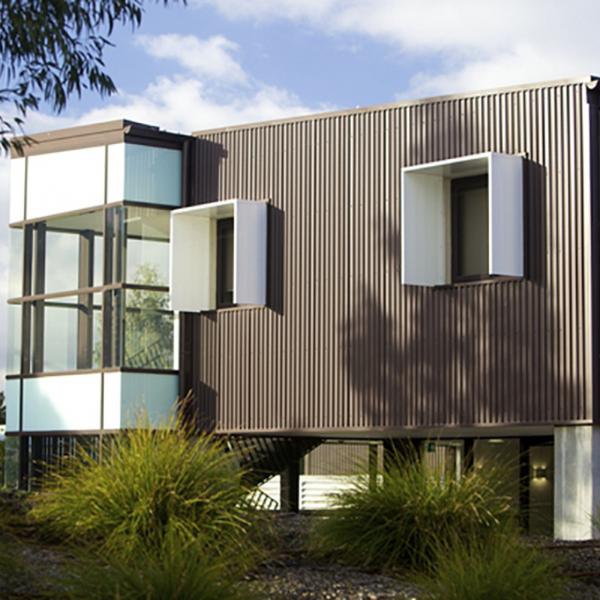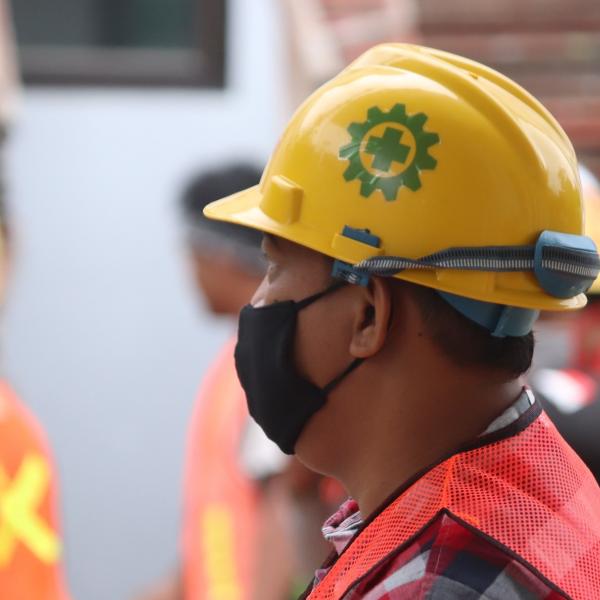
Melbourne Access Proposals
ANSTO’s user office in Melbourne offers access to the Australian Synchrotron, a world-class research facility with over 5,000 user visits per year. ANSTO seeks collaboration and partnerships with research organisations, scientific users and commercial users.
FAQs and more technical beamline information is available on the Australian Synchrotron User Wiki pages.
User portal
Use this portal to submit proposals and subsequent experiments for access to the Australian Synchrotron.
Further communication will be sent by email to scheduled beamtime Users, and please check this webpage on a regular basis for further updates. If due to COVID-19 travel restrictions you think you will be unable to attend your scheduled Beamtime Experiment, please contact Beamline staff and the Victorian user office.
Access types and proposal round deadlines
The Australian Synchrotron is free of charge for all researchers who are publishing results in open literature and is allocated through the peer-review application process, for commercial users there is a fee structure.
Merit Access
Merit proposals are peer-reviewed for scientific merit and technical feasibility by external scientific reviewers and a specialist committee. Based on these reviews, proposals are then ranked for each beamline, and all applicants are notified by the user office of the outcomes.
Merit Access - Proposal round deadlines
Dates subject to change
2025-1: User beamtime late January to early May 2025
| Key dates | |
|---|---|
| Call for proposals opens | 4 July 2024 |
| Call for proposals closes | 24 July 2024 |
| Users notified | Late October |
| Beamlines | Australian Synchrotron |
2025-2: User beamtime late May to August 2025
| Key dates | |
|---|---|
| Call for proposals opens | 22 October 2024 |
| Call for proposals closes | 27 November 2024 |
| Users notified | Late March |
| Beamlines | Australian Synchrotron |
2025-3: User beamtime September to December 2025
| Key dates | |
|---|---|
| Call for proposals opens | 25 March 2025 |
| Call for proposals closes | 15 April 2025 |
| Users notified | Late July |
| Beamlines | Australian Synchrotron |
MX Collaborative Access Program
The standard way of accessing beamtime on the macromolecular- and micro-crystallography beamlines at the Australian Synchrotron is via Collaborative Access Program proposals. The implementation of CAPs recognises that this system better reflects the needs of the MX community where labs require regular access to beamtime in order to progress their research activities. Sharing beamtime between different laboratories allows the CAP to have the flexibility to optimally utilise beamtime allocations dependent on sample and team member availability. Read more.
2025 User beamtime late January to early December 2025
| Key dates | |
|---|---|
| Call for proposals opens | 4 July 2024 |
| Call for proposals closes | 24 July 20234 |
| Users notified | Late October |
MX Rapid Access (including proposal round deadlines)
To provide quick access to the macromolecular crystallography beamlines, users can apply for rapid access to the facility. Rapid Access (RA) gives users a route for urgent access to beamtime in certain circumstances.
Approximately three shifts of RA time per month will be reserved on each MX beamline on days to be announced in advance. The call for proposals will open approximately one month before the RA day and close approximately two weeks prior. RA proposals will be assessed by the Program Advisory Committee on the basis of merit.
Priority for RA time will be given to those researchers who are not members of a Collaborative Access Program (CAP). CAP members will be required to demonstrate a need for urgent access to beamtime.
Examples of urgency include, but are not limited to:
- High profile work in danger of losing out to international competition.
- Risk of losing precedence in intellectual property (e.g. a patent position).
- Critical time-limited work for inclusion in a graduate student's thesis.
- A new project for a user with no existing program allocations who may have to wait an unreasonable amount of time for access to project or program beamtime.
A successful application must also demonstrate feasibility. The status of the crystals and detail of the experiment to be carried out must be clearly stated.
If a proposal for RA time is unsuccessful due to RA time being allocated to other requests then that proposal will be removed from the system and will need to be resubmitted for the next RA round.
Please note:
Rapid Access proposal round deadline (2024_3)
Unfortunately we will not be running the MX1 & MX2 rapid-access in 2025/1.
PD Rapid Access Mail-in
Users with powdered samples in capillaries for ambient data collection are welcome to submit an application for this access mode. There will be up to 6 rapid access rounds on PD per year with proposals being a shortened version of the standard merit proposal. The call for proposals will open for 2 weeks and approximately 2 months before the rapid access day. Proposals will be assessed by the PAC and successful experiments will be run on the scheduled mail-in days.
Requirements:
- Groups can only submit 1 mail-in proposal per round.
- Groups can select one of two energies: 21 or 16 keV for measurement under ambient conditions.
- There is a maximum of 20 samples or a 3-hour shift, per group per round.
- Only samples with low risks/hazards will be accepted.
- Commercial users cannot use the mail-in service and need to contact beamline staff directly.
Further information can be found on the Australian Synchrotron Wiki.
For any questions, please contact the beamline team
PD Rapid Access Mail-in proposal round deadlines
| Round | Open for applications | Deadlines (Melbourne time) |
|---|---|---|
| 2025/1 PD RA Mail-in R1 | 30 November 2024 | 11.59pm, 12 December 2024 |
| 2025/1 PD RA Mail-in R2 | Unfortunately we will not be running the PD rapid-access mail-in R2 in 2025/1. |
Commercial Access
Commercial services with the Australian Synchrotron customised experimental facilities in Melbourne provide an impressive array of non-destructive, high resolution, rapid, in-situ, real-time imaging and analysis techniques. These generate elemental, structural and chemical information from diverse sample types ranging from living cells to advanced materials, industrial components and mineral processes.
The unique properties of synchrotron light mean that experimental results are far superior in accuracy, clarity, specificity and timeliness to those obtained using conventional laboratory equipment.
Commercial access gives you:
- Fast data
- Confidentiality & IP protection
- Fast & guaranteed access
- Highly qualified & experienced staff
Commercial services at the Australian Synchrotron
International Synchrotron Access Program
The International Synchrotron Access Program (ISAP) is administered by the Australian Synchrotron and is designed to assist Australian-based Synchrotron users to access overseas Synchrotron related facilities. Sources such as free electron lasers (FELs) will also be considered. The objectives of the program are:
- To facilitate access to international Synchrotron related facilities for Australian University researchers by providing travel and subsistence funding
- To ensure that those projects are funded which will yield the greatest benefit to the Australian community, and which strategically enhance Australia’s Synchrotron and research capabilities
- To enhance in the Australian research community awareness and expertise in emerging Synchrotron techniques and methodologies.
Read more about the International Synchrotron Access Program (ISAP)
Proposal submission advice
Review criteria
Merit proposals are assessed by external reviewers and Program Advisory Committees based on 4 main criteria.
1. Quality of the Scientific Proposal. This makes up 40% of the reviewer score.
- Describe the purpose and importance of your science
- Describe the aim of the experiment and what information you expect to get. How will this contribute to your project?
- Make sure that reviewers can easily determine the scientific value of the Synchrotron experiment you are planning and how it will contribute to the relevant field of research or application.
2. National Benefit and Applications of the Proposed Research. This makes up 30% of the reviewer score.
- Explain how the proposed research is likely to lead to the creation of beneficial national impacts (economic, environmental, health, social or cultural)
- Explain how the proposed research broadly supports Australian or New Zealand (as appropriate) national research priorities
- Provide objective evidence that the research is important to likely consumers or adopters
- If you are an applicant from outside Australia or New Zealand and you are unable to describe a particular national benefit for Australia (or New Zealand where relevant), you should note this. You may also want to point to any of the general benefits (e.g. reciprocity of access, international collaboration, knowledge transfer) of international access that may be relevant to your application.
3. Track Record (relative to opportunity) of the investigators. This makes up 30% of the reviewer score.
- Give a description of the experience of all the applicants on the proposal
- Include a description of previous Australian Synchrotron experiments carried out in the last 3 years and a brief description of the outcomes obtained
- Update your publication history with all your accepted and published publications from Australian Synchrotron experiments
- Include any of your relevant non-Synchrotron publications, especially if you are a new user.
4. Need for Synchrotron Radiation (no score - yes/no only)
- Describe why you need Synchrotron radiation for this work in the "The need to use Synchrotron Radiation for this research" section in your proposal
- Describe why the experiment can't be done with laboratory facilities or other techniques. In particular, include relevant laboratory data to back up your claims.
- Justify the choice of beamline for the experiment.
General hints for completing your proposal
- Only the principal scientist can submit the proposal.
- In order to submit the proposal, the principal scientist MUST have their up-to-date affiliation details entered under 'My Account'. This can be accessed from the Portal Dashboard.
- Students should not be the principal scientist on a proposal.
- Provide evidence of why Synchrotron radiation is necessary for the experiment and the project.
- Include relevant laboratory data to support your proposal.
- Save your work often to avoid accidental loss or system time-out.
- Avoid using the 'Back' button in your internet browser as the Portal will return an error and you may lose valuable un-saved work. You should only ever use the Portal-specific buttons to navigate the Australian Synchrotron Portal.
Portal User Guide
Australian Synchrotron User Portal
This user guide provides information to external merit researchers, commercial clients, scientific collaborators and partners who use the Australian Synchrotron User Portal to submit proposals for access to their beamlines.
User beam schedule
The schedule for the Synchrotron includes time for shut-down for maintenance and upgrade of the storage ring and beamlines, and operational beamtime. Read more.
Contact the Melbourne user office
Office Hours: Monday to Friday 8.30am - 4.30pm





